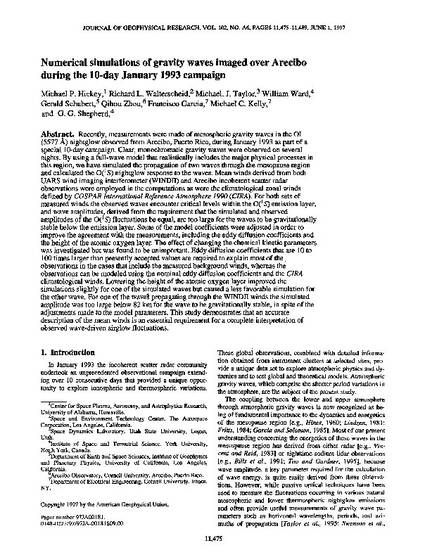
Recently, measurements were made of mesospheric gravity waves in the OI (5577 Å) nightglow observed from Arecibo, Puerto Rico, during January 1993 as part of a special 10-day campaign. Clear, monochromatic gravity waves were observed on several nights. By using a full-wave model that realistically includes the major physical processes in this region, we have simulated the propagation of two waves through the mesopause region and calculated the O(¹S) nightglow response to the waves. Mean winds derived from both UARS wind imaging interferometer (WINDII) and Arecibo incoherent scatter radar observations were employed in the computations as were the climatological zonal winds defined by COSPAR International Reference Atmosphere 1990 (CIRA). For both sets of measured winds the observed waves encounter critical levels within the O(¹S) emission layer, and wave amplitudes, derived from the requirement that the simulated and observed amplitudes of the O(¹S) fluctuations be equal, are too large for the waves to be gravitationally stable below the emission layer. Some of the model coefficients were adjusted in order to improve the agreement with the measurements, including the eddy diffusion coefficients and the height of the atomic oxygen layer. The effect of changing the chemical kinetic parameters was investigated but was found to be unimportant. Eddy diffusion coefficients that are 10 to 100 times larger than presently accepted values are required to explain most of the observations in the cases that include the measured background winds, whereas the observations can be modeled using the nominal eddy diffusion coefficients and the CIRA climatological winds. Lowering the height of the atomic oxygen layer improved the simulations slightly for one of the simulated waves but caused a less favorable simulation for the other wave. For one of the waves propagating through the WINDII winds the simulated amplitude was too large below 82 km for the wave to be gravitationally stable, in spite of the adjustments made to the model parameters. This study demonstrates that an accurate description of the mean winds is an essential requirement for a complete interpretation of observed wave-driven airglow fluctuations.
